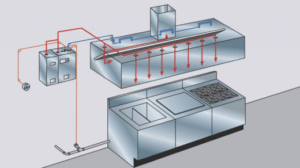In the realm of immersive technologies, both augmented reality (AR) and virtual reality (VR) have made significant advancements in recent years. These technologies offer unique experiences that transport users to digitally enhanced or entirely virtual environments. In this article, we will explore the differences between augmented reality and virtual reality, their applications, and the impact they have on various sectors.
Augmented Reality (AR)
Augmented reality involves overlaying digital content onto the real world. AR enhances our perception of the physical environment by adding virtual elements that appear to coexist with it. These virtual elements can be seen through devices like smartphones, tablets, smart glasses, or AR headsets. Here are some key features and applications of AR:
Key Features of AR:
Real-World Integration: AR integrates virtual elements with the real world. Users can see both the physical environment and digital content simultaneously.
Interactive: AR often allows for user interaction with virtual objects. This interaction can be as simple as tapping on the screen to reveal information or as complex as manipulating virtual objects.
Varied Hardware: AR applications run on a wide range of devices, from smartphones to specialized AR headsets like Microsoft HoloLens.
Applications of AR:
Smartphones and Tablets: AR is commonly used in mobile apps to provide real-time information or enhance gaming experiences. Apps like Pokémon GO and Snapchat’s filters are well-known examples.
Education: AR is used in educational apps and textbooks to make learning more engaging. It can provide 3D models, historical reconstructions, or interactive diagrams.
Navigation: AR-based navigation apps, such as Google Maps, overlay directions and points of interest onto the real world as seen through a smartphone camera.
Retail: AR is used in retail for virtual try-ons, enabling customers to visualize products like clothing, makeup, or furniture in their own environment.
Virtual Reality (VR)
Virtual reality immerses users in a completely digital environment, cutting them off from the physical world. This immersion is typically achieved through VR headsets that block out the user’s surroundings and replace them with a virtual world. Here are key features and applications of VR:
Key Features of VR:
Immersive Environments: VR creates entirely immersive environments that can be fantastical, realistic, or anywhere in between.
Sensory Feedback: VR often includes sensory feedback, such as motion tracking and haptic devices, to make users feel like they are truly in the virtual world.
Isolation: VR is isolating by design, as it aims to remove the user from the real world and transport them into a digital one.
Applications of VR:
Gaming: VR gaming is one of the most popular applications. Users can experience virtual worlds, interact with objects, and immerse themselves in game narratives.
Training and Simulation: VR is used for training in various fields, including aviation, medicine, and military. It provides a safe and realistic environment for practice and learning.
Virtual Tours: VR offers virtual tours of real-world places and historical sites. This is particularly useful for travel planning and education.
Therapy and Rehabilitation: VR is used for therapeutic purposes, such as exposure therapy for phobias or physical rehabilitation after injuries.
Differences between AR and VR
While AR and VR share commonalities as immersive technologies, they are fundamentally different in their approaches and applications:
Real vs. Virtual: The most fundamental difference is that AR enhances the real world with virtual elements, while VR immerses users in entirely virtual environments.
Interaction: AR typically allows users to interact with both the real and virtual worlds simultaneously, while VR focuses on interaction within the virtual environment.
Sensory Experience: VR places a heavy emphasis on sensory immersion, often involving motion tracking and haptic feedback devices to create a realistic sense of presence. AR is primarily visual and doesn’t isolate the user from the real world.
Hardware: AR is accessible through a range of devices, from smartphones to specialized glasses and headsets. VR relies on dedicated VR headsets that are designed to block out the physical world completely.
Applications and Impact
Both AR and VR have a significant impact on various sectors, offering unique advantages and opportunities:
- Gaming: VR gaming has gained a strong foothold, offering immersive experiences where players can physically engage with virtual environments. AR gaming has brought people outdoors and encouraged physical activity while interacting with virtual objects.
- Education: AR and VR are transforming education by making learning more engaging. VR provides realistic simulations and virtual field trips, while AR enhances textbooks and classroom activities.
- Training: VR is particularly useful for training in high-risk and complex environments, such as aviation, medicine, and military. AR can support on-the-job training by providing real-time information and guidance.
- Healthcare: VR is used for pain management, exposure therapy, and rehabilitation. AR has applications in surgery, where it can provide real-time data and support to surgeons.
- Retail: AR is changing the way consumers shop by enabling virtual try-ons and interactive product displays. VR is used for virtual showrooms and immersive shopping experiences.
- Real Estate: Both AR and VR are used in real estate for virtual property tours and interior design visualization. AR can overlay property information when viewing listings.
- Entertainment: Both technologies have made inroads into the entertainment industry. AR-enhanced movies and events provide interactive experiences, while VR offers immersive storytelling and virtual concerts.
- Industrial Applications: AR is widely used in industry for maintenance and repair tasks, with augmented reality glasses providing workers with step-by-step instructions and real-time data. VR is used for design and prototyping in product development.
The Future of AR and VR
The future of AR and VR is exciting, with ongoing advancements and increasing integration into our daily lives. Some notable trends and developments include:
- Improved Hardware: Both AR and VR headsets are becoming more powerful, compact, and affordable, making them accessible to a broader audience.
- Mixed Reality (MR): MR combines elements of both AR and VR, allowing virtual objects to interact with the real world. This promises new opportunities for gaming, design, and more.
- Enterprise Use: AR and VR are increasingly used by businesses for training, design, and remote collaboration, particularly in response to global events like the COVID-19 pandemic.
- Healthcare Innovations: Both technologies continue to make strides in healthcare, with applications in therapy, surgical guidance, and remote consultations.
- Education Transformation: AR and VR are expected to continue transforming education, making learning more engaging and accessible.
In conclusion, augmented reality and virtual reality represent two distinct yet complementary approaches to immersive technology. While they differ in their fundamental concepts and applications, both have the potential to revolutionize industries and enrich our experiences in ways we are only beginning to explore. As technology advances and adoption grows, we can expect these immersive technologies to play an increasingly prominent role in our daily lives.
















+ There are no comments
Add yours